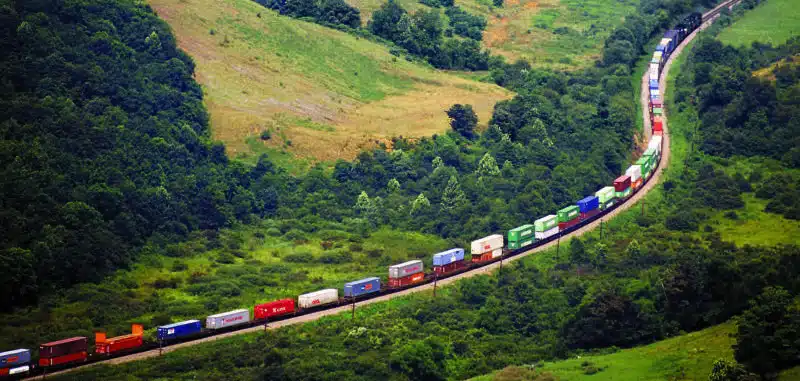How do we protect our environment for future generations?
For freight railroads, the answer is innovating technologies, investing in equipment and pioneering new ways of efficiently running our operations to help mitigate climate change. Thanks in part to these investments, railroads can move one ton nearly 500 miles per gallon of fuel, on average. This achievement helps make railroads the most fuel-efficient way to move freight over land. Here are just some of the ways freight rail is delivering a more sustainable future for America:
Reducing Idling
Freight rail has a much smaller carbon footprint than other transportation modes. Despite accounting for about 40% or more of long-distance freight volume (measured by ton-miles), railroads account for just 1.7% of emissions from transportation-related sources, according to data from the U.S. Environmental Protection Agency. Technology like innovative “stop-start” idling-reduction systems automatically power down idling locomotives is one way railroads keep emissions down.
Maximizing Every Gallon
Steel wheels on steel rail are an inherently efficient way to move goods, but that doesn’t stop America’s freight railroads from finding ways to do more with less. Railroads use fuel management systems — software that provides real-time recommendations to engineers on how to drive the locomotive most efficiently — to maximize fuel efficiency.
When multiple locomotives are used to operate a single train, advanced technology adjusts the power setting on each locomotive individually to optimize efficiency and reduce fuel waste while maintaining a consistent speed. Taken together, these and other efforts make trains three to four times more fuel efficient than trucks, on average.
Making Freight Yards More Environmentally Friendly
The rail industry’s commitment to making its systems more environmentally friendly extends beyond trains and tracks. Traditionally, cranes used diesel fuel to move cargo on and off freight cars. The use of electric cranes that produce zero greenhouse gas emissions has recently increased.
Re-designing Railcars
Thanks to improved freight car design and other efforts, in 2022, the average freight train carried 4,089 tons, up from 2,923 tons in 2000. By moving more freight without increasing fuel use, the redesigned railcars have made freight rail even more sustainable.
Relieving Highway Congestion
A single freight train can take several hundred trucks off the nation’s highways — helping motorists and communities breathe easier. AAR analyzed data and found that if 25% of the truck traffic moving at least 750 miles went by rail instead, annual greenhouse gas emissions would fall by approximately 13.6 million tons. If 50% of the truck traffic moving at least 750 miles went by rail instead, greenhouse gas emissions would fall by approximately 27.2 million tons.
And, with taxes and fees paid by commercial trucks falling far short of covering the cost of the highway damage they cause, privately-owned freight railroads — which spent well above $23 billion a year over the past five years in private capital annually on their network — relieve taxpayer burden, as well.
A cleaner environment and less congested roads are important priorities for our nation. And, with the U.S. Department of Transportation expecting total freight demand to grow 30% by 2040, moving more freight by rail is a choice everyone can feel good about.
